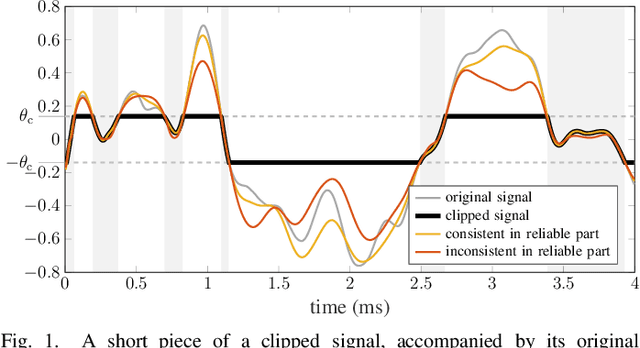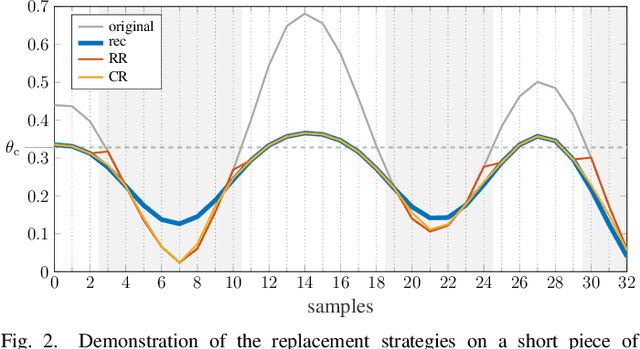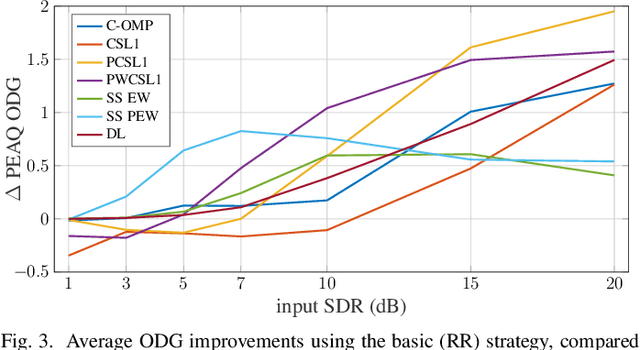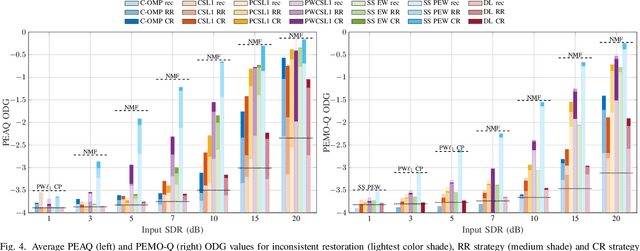Audio declipping performance enhancement via crossfading
Paper and Code
Apr 07, 2021



Some audio declipping methods produce waveforms that do not fully respect the physical process of clipping, which is why we refer to them as inconsistent. This letter reports what effect on perception it has if the solution by inconsistent methods is forced consistent by postprocessing. We first propose a simple sample replacement method, then we identify its main weaknesses and propose an improved variant. The experiments show that the vast majority of inconsistent declipping methods significantly benefit from the proposed approach in terms of objective perceptual metrics. In particular, we show that the SS PEW method based on social sparsity combined with the proposed method performs comparable to top methods from the consistent class, but at a computational cost of one order of magnitude lower.
 Add to Chrome
Add to Chrome Add to Firefox
Add to Firefox Add to Edge
Add to Edge